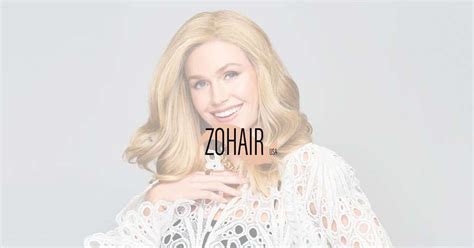Introduction
Alopecia, a condition that causes hair loss, can significantly impact self-esteem and overall well-being. Wigs offer a transformative solution for those experiencing hair loss, empowering them to rediscover their confidence and express their individuality.

Statistics and Prevalence
- According to the National Alopecia Areata Foundation (NAAF), alopecia affects over 6.8 million people in the United States.
- Women account for approximately 60% of cases.
- Alopecia areata, an autoimmune disorder, is the most common form of hair loss, affecting an estimated 2% of the population.
Types of Alopecia and Causes
Alopecia can occur in various forms, each with unique causes:
- Alopecia Areata: An autoimmune disorder where the immune system attacks hair follicles, causing sudden hair loss in patches.
- Androgenic Alopecia: Also known as male-pattern baldness, it is a hereditary condition related to DHT, a male hormone.
- Telogen Effluvium: Temporary hair loss caused by physical or emotional stress, thyroid issues, or certain medications.
- Cicatricial Alopecia: Scarring of the scalp that leads to permanent hair loss, often caused by infections, injuries, or autoimmune diseases.
Wigs: A Solution for Confidence and Style
Wigs provide an effective and versatile solution for individuals with alopecia, allowing them to:
- Conceal hair loss and regain a sense of normalcy.
- Experiment with different styles and colors to enhance their appearance.
- Express their individuality and self-confidence through their hairstyle.
Choosing the Right Wig
Selecting the perfect wig involves considering factors such as:
- Type of Alopecia: Different types of alopecia may require specialized wig designs.
- Head Shape and Size: A comfortable and secure fit is essential to avoid slippage and discomfort.
- Texture and Color: Match the wig to your natural hair characteristics or experiment with new looks.
- Material: Synthetic or human hair wigs offer varying levels of durability, comfort, and natural appearance.
- Construction: Monofilament, lace front, or open cap wigs have distinctive features that cater to different preferences.
Benefits of Wigs for Alopecia
- Improved Self-Esteem: Wigs empower individuals to regain confidence and feel more comfortable in social settings.
- Enhanced Appearance: Wigs can conceal hair loss and provide a natural-looking alternative to thinning hair.
- Styling Flexibility: Wigs offer the freedom to experiment with different hairstyles and colors, allowing for self-expression.
- Protection from the Elements: Wigs can protect the scalp from sun exposure and wind, especially for those with sensitive skin.
- Medical Benefits: Wigs can provide insulation for the scalp during chemotherapy or alopecia areata treatment.
Pain Points and Motivations
Individuals with alopecia often face challenges that wigs can alleviate:
- Social Stigma: Fear of judgment or discrimination due to hair loss.
- Anxiety and Depression: Hair loss can trigger feelings of isolation and self-doubt.
- Lifestyle Limitations: Avoiding social activities or feeling restricted in career choices due to hair loss.
- Desire to Feel Normal: Aspiration to regain a sense of normalcy and self-acceptance.
Testimonials
“My wig has given me back my confidence. I no longer feel self-conscious about my hair loss.” – Emily, alopecia areata patient
“Wigs have allowed me to experiment with different hairstyles and colors, which has made me feel more expressive and youthful.” – Sarah, androgenic alopecia patient
Resources for Wig Wearers
- National Alopecia Areata Foundation (NAAF): Provides support, education, and resources for individuals with alopecia.
- American Hair Loss Association (AHLA): Advocates for the rights of hair loss patients and provides educational materials.
- Wigs for Kids: Non-profit organization that provides wigs to children experiencing hair loss.
Table 1: Types of Alopecia and Their Causes
| Type of Alopecia | Cause |
|---|---|
| Alopecia Areata | Autoimmune disorder |
| Androgenic Alopecia | Hereditary, related to DHT hormone |
| Telogen Effluvium | Physical or emotional stress, thyroid issues, medications |
| Cicatricial Alopecia | Scarring of the scalp |
Table 2: Wig Construction Types
| Construction Type | Description |
|---|---|
| Monofilament | Sheer fabric with hand-tied hair, providing a natural scalp appearance |
| Lace Front | Lace fabric with hair sewn in, creating the illusion of natural hair growth |
| Open Cap | Mesh or elastic cap with hair attached, offering breathability and comfort |
Table 3: Wig Materials
| Material | Characteristics |
|---|---|
| Synthetic Hair | Affordable, durable, easy to style |
| Human Hair | Natural appearance, soft and silky, requires more care |
| Heat-Resistant Fiber | Can be styled with heat tools, versatile and long-lasting |
Table 4: Benefits of Wigs for Alopecia
| Benefit | Description |
|---|---|
| Improved Self-Esteem | Regain confidence and feel more comfortable in social settings |
| Enhanced Appearance | Conceal hair loss and provide a natural-looking alternative |
| Styling Flexibility | Experiment with different hairstyles and colors for self-expression |
| Protection from the Elements | Shield the scalp from sun exposure and wind |
| Medical Benefits | Provide insulation during chemotherapy or alopecia areata treatment |
